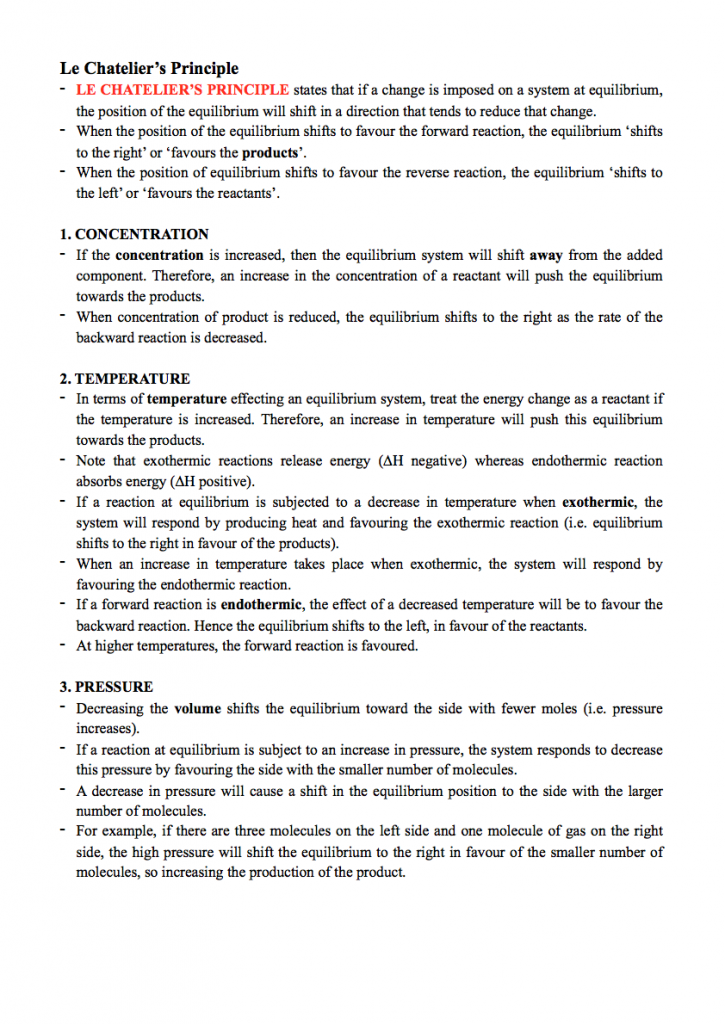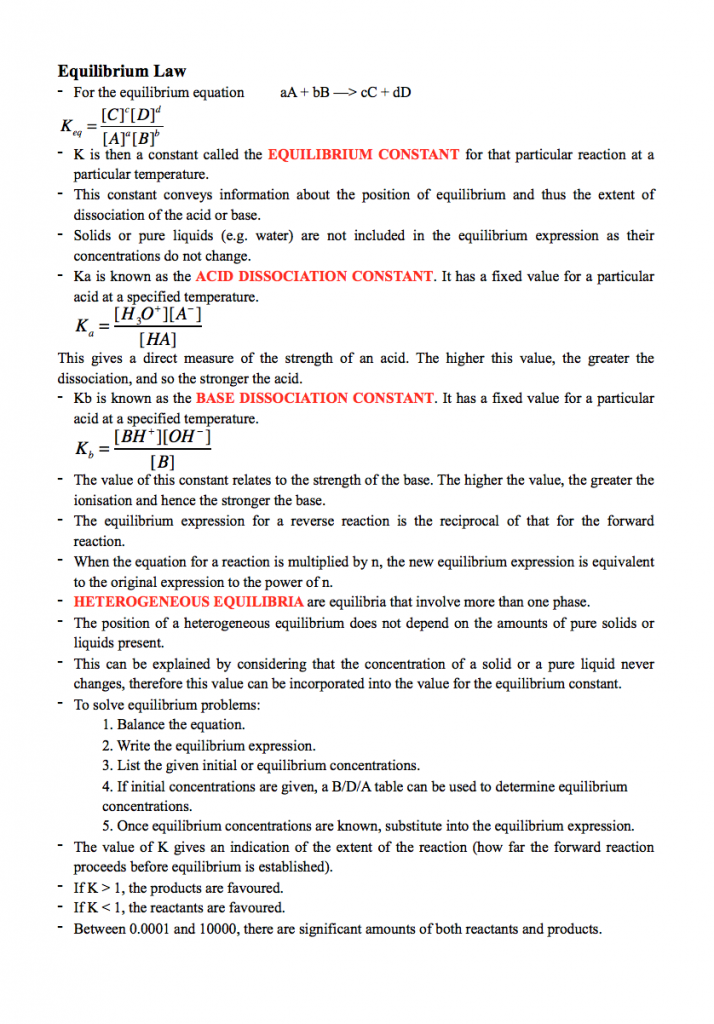This unit in Chemistry for the QCE deals with the topic of Acids, Bases & Equilibrium in thorough detail. In particular, this course covers the following learning intentions:
(1) Properties of Acids and Bases
(2) Brønsted-Lowry Theory: definitions of the Brønsted-Lowry theory of acids and bases, an acid-base reaction, conjugate base, conjugate acid, amphoteric substances, diprotic, triprotic and polyprotic acids.
(3) Strong and Weak: definition and comparison of the strength of an acid or base, as well as the difference to concentration. Other definitions include strong electrolyte and a weak electrolyte, electrical conductivity, rate of reaction, as well as common examples of strong acids and bases and weak acids and bases.
(4) pH: the pH scale is studied using the terms acidity and basicity, including equations to calculate the pH, pOH, hydronium ion concentration, hydroxide ion concentration, the water equilibrium constant Kw.
(5) Dynamic Equilibrium: explanation of dynamic equilibrium and a chemical equilibrium is included as well as the properties of each.
(6) Le Chatelier’s Principle: this principle is studied in thorough detail, including the many factors that influence the position of the equilibrium such as concentration, temperature, pressure and volume.
(7) Equilibrium Law: the equilibrium equation is studied, other definitions include the equilibrium constant, acid dissociation constant, base dissociation constant, heterogeneous equilibria and how to solve equilibrium problems.
(8) Haber Process & Contact Process: a case study of the Haber process and the Contact process is included to increase the yield of ammonia and sulphur in each process respectively. A study of the equilibrium yields of these products to be obtained and the rate of the reaction is studied, as well as the conditions required.



Reviews